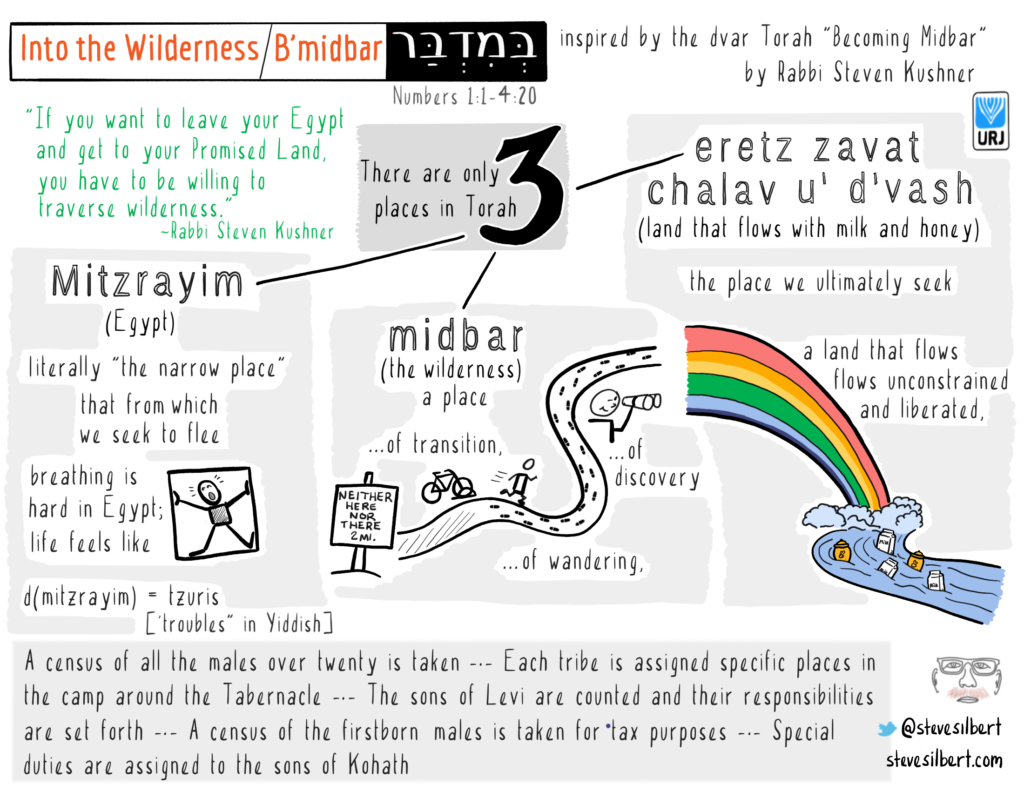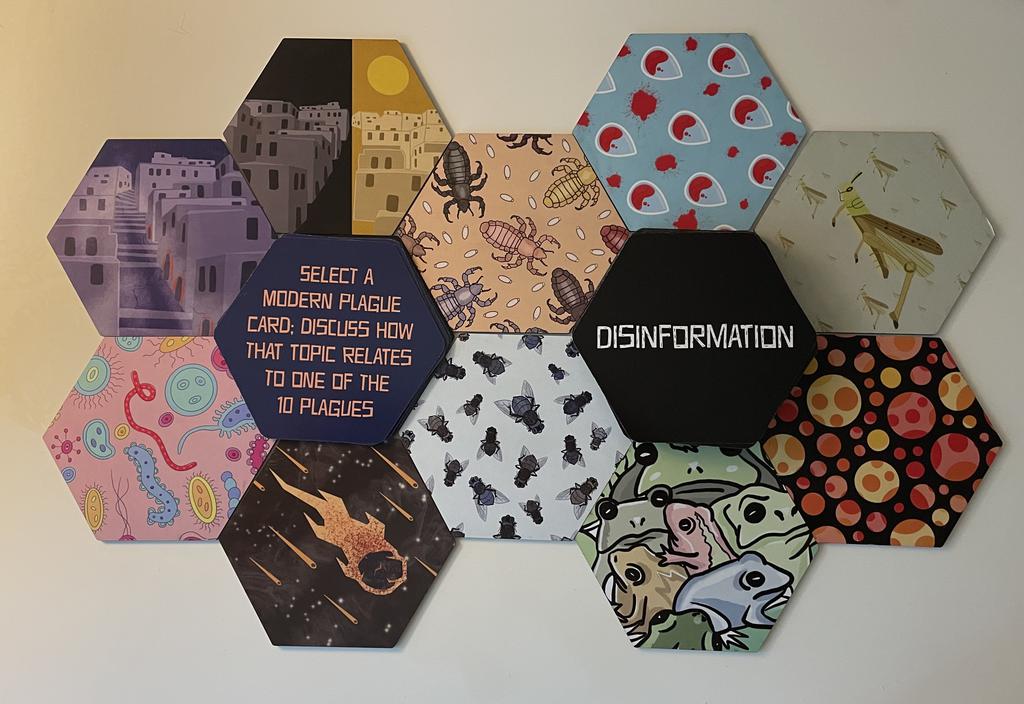April 4, 2023 | 14 Nisan, 5783
It’s an age-old question in education: How do you get new information to stick? For Steve Silbert, a Sefaria user in Jacksonville, Florida, the answer is drawing.
It all started with a poster he saw in a professor’s cubicle at Virginia Commonwealth University, which used a simple sketch to express Simon Sinek’s Golden Circle theory. That theory is explained in Sinek’s nearly 18-minute TED Talk, but Steve was impressed by the ability of a single visual to sum it up so clearly. He learned that the poster was an example of sketchnoting, a form of visual note-taking, and soon he was trying it himself.
Sketchnoting the Torah
A few years ago, Steve decided to study the weekly Torah portion through sketchnoting. He would read the text and research related commentaries, then hone in on a specific aspect with a drawing that he would share on social media. “Things that I drew five years ago, if you say something about any Torah portion, in the back of my head something in that image pops up and all of the things that were going on around it start to surface,” he says.
Noticing the benefits of sketchnoting in his own life, Steve started to incorporate it into his work as a professional facilitator and enterprise Agile coach teaching businesses how to foster better collaboration and innovation. “If you teach people how to draw their ideas out, the collective retention is a lot higher,” he says, “and what you get is a lot of ‘yes and’ instead of ‘no but.’”

An example of Steve's weekly Torah sketchnotes. (Courtesy of Steve Silbert)
This process of expanding one’s thinking, of considering an idea from multiple perspectives, is something that Steve sees sketchnoting and Judaism holding in common. “The foundation of Jewish education is to question, to look at the thing and turn it around and find meaning in every direction,” he says.
So it was only natural for him to find a way to combine drawing, Judaism, and collaborative learning.
Gamifying the Learning Journey
These interests led Steve to Bayit, a non-profit dedicated to spiritual innovation in Jewish life. Together they started producing books and games — or what Steve calls “gamified learning tools” — to engage people along their own Jewish learning journeys.
In the process, Steve discovered Sefaria. “We do Torah study every week together, and at some point one of the rabbis pulled up Sefaria, and I’m like, what is that? Oh, the library on the head of a pin? Count me in!” he recalls.
Now Sefaria is a regular part of Steve’s toolkit. “I’ve found it to be a one-stop shop for the Hebrew texts that I can copy and paste into Procreate, the app that I use to draw. It speeds up the workflow,” he says. And, since so many of his creations are collaborations (he frequently works with artist Mary Walter under the label Bayit Games), it’s helpful to have direct links to a common source for everyone working on a project.
Engaging With Text
Beyond a reference tool, Steve uses the library to explore the many layers of a text with the help of translations and connected commentaries, sometimes coming back to the same text again and again.
For example, one of his most recent projects, called Plagues of Our Times, is a game centered around the ten plagues described in the Passover Haggadah. It consists of two sets of cardboard tiles (think Settlers of Catan): One set includes a tile for each of the ten plagues with information based on the biblical source text. The other set names modern-day issues like climate change, gun violence, and food deserts. Players select a modern-day tile, then decide which ancient plague it most resembles and discuss why.

Plagues of Our Times by Mary Walter and Steve Silbert, released by Bayit Games. (Courtesy of Steve Silbert)
The game, which can be used during a Passover seder, serves as a conversation-starter and prompts participants to find modern relevance in the Passover story. In creating the game, Steve spent a considerable amount of time with texts in the library. “I ended up reading through Mishnah Pesachim several times over,” he says.
Another Passover tool is the Rebooted Seder Plate, a series of tiles representing different components of the seder, like horseradish or the seder plate itself. On the back of each tile is something you might not know about that component. “I basically took what I learned by pulling it out of Sefaria and talking through it with some rabbi friends, then condensed that into something you don’t know about the seder plate,” he explains.
For Steve, there’s a unique value to combining text and visuals: “Torah is a very visual language. The whole intention [with these tools] is to get people thinking in a different way, to get ideas out to help people engage with their Judaism.”
But although one of Steve’s sketchnotes or game tiles might include only a verse or two from a Jewish text, the finished product represents extensive study and conversation around the source material that he freely accesses on Sefaria. “I’m so thankful for Sefaria being out there,” he says. “It’s a great deep learning resource. I can’t say that enough.”
Have your own Sefaria Story to tell? Share it with us.



